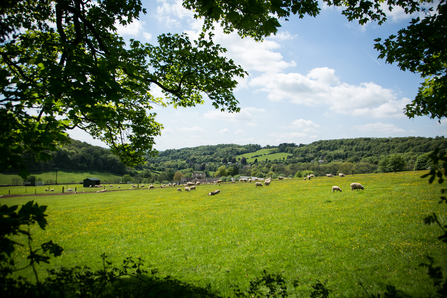2021 marks 60 years of the Gloucestershire Wildlife Trust. To celebrate this amazing milestone, we’d like to highlight 6 beautiful nature reserves that you can visit this year.
Learn about these reserves with Emily, our newest member of the Communications team, as she discovers the places you can go fossil hunting and woodland exploring
Stenders Quarry
Stenders Quarry is a great place to go fossil hunting or butterfly spotting.
Given its SSSI status for it's geological features and the important habitats found in this sheltered yet sunny position, it is also home to Britain's smallest bird - the goldcrest.
Peek back in time by observing the rock formations and see if you can hear (or spot!) a great spotted woodpecker among the oaks and elms.
Three Groves Wood
Three Groves Wood’s ancient woodland puts on a fine bluebell show, see if you can find the spiral shelled Ena montana land snails or the spotted flycatchers that are arriving from South Africa.
This nature reserve is also a great place to see other woodland bird life, and is part of the Golden Valley Wildlife Way that stretched between Stroud and Cirencester.
Collin Park Wood
Collin Park Wood lies near River Leadon, Newent, and hosts abundant birdlife all year round.
Centuries of coppicing has encouraged a multitude of woodland flora, supporting the invertebrate populations that bring the birds.
Keep your ears open to hear the call of willow warblers while you take in the spring flowers.
Coopers Hill
Coopers Hill is more than the cheese rolling hill - there are over 100 acres of grassland, beechwoods and scrubland habitats to explore!
It is also part of the Cotswold Commons and Beechwoods Special Area of Conservation (SAC), which means it is an internationally important wildlife area.
It was once thought to support one of Britain’s rarest orchids, the red helleborine, so keep an eye out.
Ban-y-Gor
Ban-y-Gor’s peaceful woodland just outside of Chepstow is the perfect place to immerse yourself in the forest.
Ancient coppicing and pollarding has resulted in carpets of ferns, mosses, foxgloves and yellow archangels.
There is a wide variety of tree species here from oak and beech, to common whitebeam and small-leaved limes.
See if you can identify them on the way round!
Laurie Lee Woods
Laurie Lee Woods are over three hectares of mythical forest in the Slad Valley.
Named after the Gloucestershire poet and author, this site was bought by Laurie Lee in the 1950's to prevent further development. It was purchased by GWT in 2013 to build on his aims and continue this to protect this land.
You can link together the nearby nature reserves into a circular walk called the Laurie Lee Wildlife Way and try to see the beautiful but rare species the white helleborine orchid.

Laurie Lee Wildlife Way






